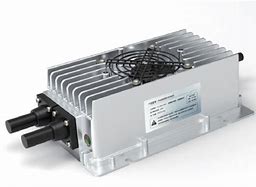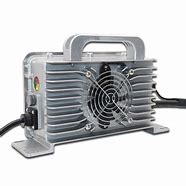We have seen various kinds of chargers such as cell phone chargers, camera chargers, tram chargers, hand warmer chargers, and so on. Because of the different scope of their use, nicknames are also different. For the use of chargers, we should pay more attention to their characteristics. This will allow its use for a longer period of time. Safe use of the charger.
(1) Timing control
When using 1.25C charging rate, the battery can be sufficient for 1h; when using 2.5C charging rate, it can be sufficient for 30min. Therefore, according to the capacity and charging current of the battery, it is easy to determine the required charging time. This control method is the simplest, but because the starting charging state of the battery is not exactly the same, some batteries are undercharged, and some are overcharged. Therefore, only when the charging rate is less than 0.3C, this method is allowed.
(2) Voltage control
In the voltage control method, the easiest to detect is the maximum voltage of the battery. The commonly used voltage control methods are.
Maximum voltage (Vmax) As can be seen from the charging characteristics curve, the battery voltage reaches its maximum value when the battery is fully charged. During charging, when the battery voltage reaches the specified value, fast charging should be stopped immediately. The disadvantage of this control method is that: the maximum voltage of the fully charged battery varies with the ambient temperature and charging rate, and the maximum charging voltage of each individual battery in the battery pack also varies, so it is impossible to judge the battery has been fully charged very accurately with this method.
Negative voltage increment (-ΔV) Since the negative increment of the battery voltage has nothing to do with the absolute voltage of the battery pack and is not affected by factors such as ambient temperature and charging rate. It can be more accurate to determine that the battery is fully charged. The disadvantage of this control method is that after the negative increment of the battery voltage, the battery has been overcharged, so the temperature of the battery is higher. In addition, after the NiMH battery is fully charged, it takes a longer time for the battery voltage to appear in negative increments, and the overcharge is more serious. Therefore, this control method is mainly applicable to NiCd batteries.

Zero voltage increment (0ΔV) In NiMH battery chargers, in order to avoid waiting too long for the negative voltage increment to appear and damage the battery, the 0ΔV control method is usually used. The disadvantage of this method is that the battery voltage may vary very little for a certain period of time before it is fully charged, thus causing premature stopping of fast charging. For this reason, most current NiMH battery fast chargers use highly sensitive -0ΔV detection to stop fast charging immediately when the battery voltage decreases slightly.
(3) Temperature control
In order to avoid damaging the battery, fast charging cannot be started when the battery temperature is too low, and fast charging must be stopped immediately after the battery temperature rises to the specified value. Commonly used temperature control methods are.
The maximum temperature (Tmax) charging process, usually when the battery temperature reaches 45 ℃, should immediately stop fast charging. The temperature of the battery can be detected by a thermistor mounted with the battery. The disadvantage of this method is that the response time of the thermistor is long, and there is a certain lag in temperature detection; meanwhile, the maximum working temperature of the battery is related to the ambient temperature. When the ambient temperature is too low, the temperature of the battery will not reach 45℃ even after sufficient power is applied.
Temperature rise (ΔT) In order to eliminate the environmental influence, the temperature rise control method can be used. When the temperature rise of the battery reaches the specified value, the fast charging is stopped immediately. To achieve temperature rise control, two thermistors must be used to detect the battery temperature and the ambient temperature, respectively.

Temperature change rate (ΔT/Δt) After NiMH and NiCd batteries are fully charged, the battery temperature rises rapidly, and the rising rate ΔT/Δt is the same. When the battery temperature increases 1℃ per minute, fast charging should be terminated immediately. This charging control method, in recent years, has been commonly used. It should be noted that because the thermistor resistance and temperature relationship is non-linear, so to improve the detection accuracy should try to reduce the impact of thermistor non-linearity.
Minimum temperature (Tmin) When the battery temperature is below 10°C, the use of high current fast charging will affect the life of the battery. In this case, the charger should automatically switch to trickle charging and then switch to fast-charging after the battery temperature rises to 10℃.
A charger is an indispensable charger tool in life. Without the charger, we have no way to drive, so the use of the charger is like furniture, human life, "food, clothing, housing, and transportation" are indispensable. Our company specializes in wholesale chargers.
Contact Person: Miss. Kiki
| WhatsApp : | +8617763224709 |
|---|---|
| Skype : | +8617763224709 |
| WeChat : | +8617763224709 |
| Email : | kiki@lifepo4-battery.com |